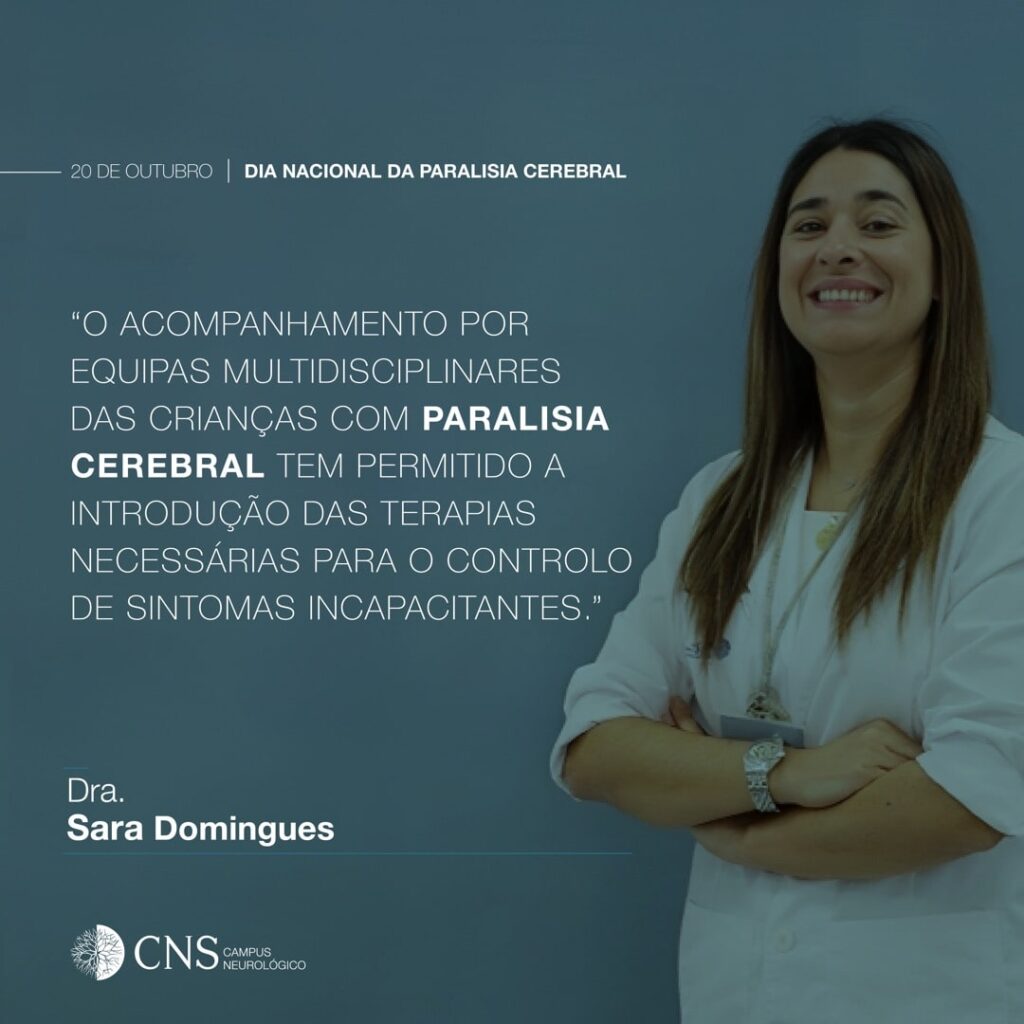In honor of National Cerebral Palsy Day, celebrated on October 20th, Sara Domingues, a specialist in Physical Medicine and Rehabilitation at CNS – Campus Neurológico, explained what this disease entails, which presents challenges for both patients and caregivers. She also emphasized the importance of starting treatment for symptoms as early as possible to work on brain plasticity. Additionally, she highlighted how scientific research has contributed to advances in the diagnosis and treatment of the disease.
What is cerebral palsy and how does it affect people living with this condition?
Sara Domingues (SD) – Cerebral Palsy (CP) is hard to define. It’s not a disease but rather a syndrome, meaning a set of symptoms that can range from mild to extremely severe, caused by a permanent brain injury. It’s the most common cause of severe disability in pediatric age, requiring lifelong medical care and affecting not only the child but also parents or caregivers.
What are the main challenges faced by people with cerebral palsy and their families on a daily basis?
SD – We can consider three types of challenges. First, the challenge of disability. Despite being caused by a permanent and non-evolving injury, the symptoms presented undergo modifications and changes, often requiring changes in therapy, new support products, possible surgical interventions, among others, which often lead to loss of workdays, economic capacity, architectural changes in the home. Then, the family challenge. A child with a disability requires the involvement of the entire family in their care, often leading to situations of parental burnout. Efforts should be made not only in caring for the child but also for the parents and caregivers. Finally, the social challenge. In milder situations, one can think of complete social integration and entering the job market, but in complex situations, there are huge difficulties in integrating these children into the school and social environment.
What are the most effective treatments and therapies currently available for people with cerebral palsy? And how do treatments and approaches need to be personalized to meet individual needs?
SD – Unfortunately, there is no treatment for CP. As I mentioned, CP is characterized by a set of symptoms, and its treatment involves controlling these symptoms and optimizing the functional capacity of these children. In reality, the most important thing is to start treatment for the symptoms as early as possible to be able to work on brain plasticity. Moreover, treatments should be personalized according to the clinical picture that the child presents.
How has scientific research contributed to advances in diagnosis and treatment?
SD – CP is caused by a permanent injury that occurred during the development of the central nervous system. Improvement in neonatal care, the introduction of hypothermia protocols, the use of neuroprotective drugs in pregnant women have allowed for a reduction in the prevalence of CP and the reduction in the possibility of brain injuries. The follow-up by multidisciplinary teams of children with CP has allowed the introduction of the necessary therapies to control disabling symptoms, avoiding inherent complications and allowing functional gains.
What messages or actions are most important to combat the stigma associated with cerebral palsy?
SD – CP is not a contagious disease. The child with CP has a set of symptoms that can be worked on. One of the most important tasks is to allow for their school and social integration, allow interaction, play, communication, even unconventional.
What are the future goals to improve the quality of life and opportunities for people with cerebral palsy?
SD – Access to healthcare and social inclusion.
Are there organizations or support groups that play a significant role in assisting people with cerebral palsy? How can people get involved or support these organizations?
SD – Yes, the Cerebral Palsy Centers that exist throughout the country and have years of experience in the follow-up and treatment of CP. There are foundations that, although not specifically related to CP, work towards the social and professional integration of people with disabilities, including CP patients. Regarding rehabilitation, the Alcoitão Rehabilitation Center, with extensive experience in the follow-up of children with CP. And at CNS where we will start the Pediatric Neurorehabilitation project with a team of Neuropediatrics, Physiatry, and Physiotherapy, whose objective is to provide multidisciplinary follow-up for children with CP.
What message would you like to leave on this National Cerebral Palsy Day?
SD – National Cerebral Palsy Day should aim to raise awareness among the entire population for equality in rights, access, and opportunities for people with CP. After all, “everyone different, everyone equal” should be a reality.
